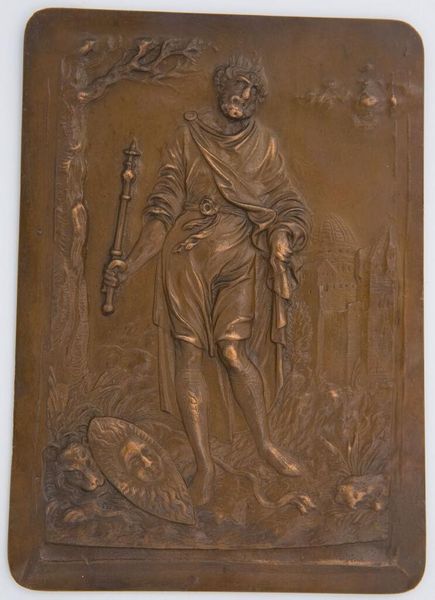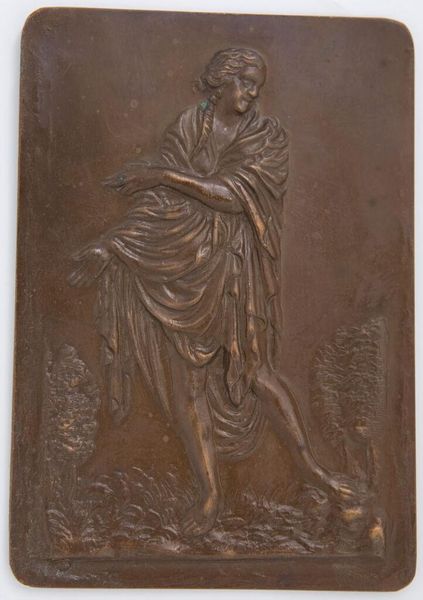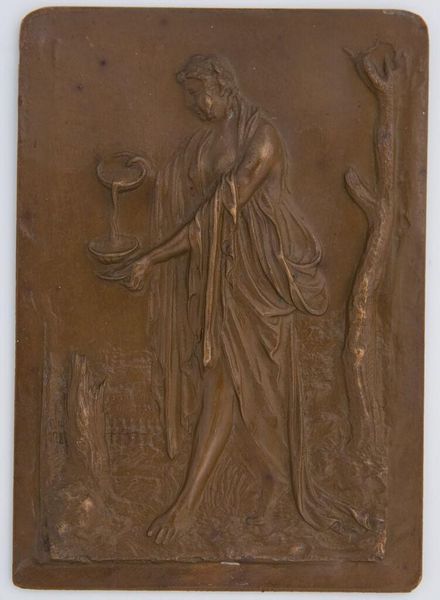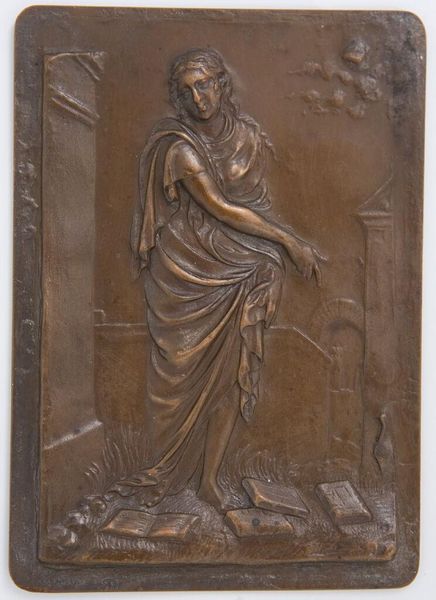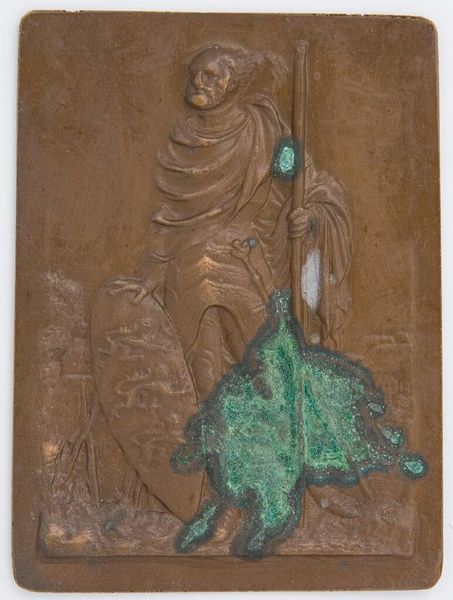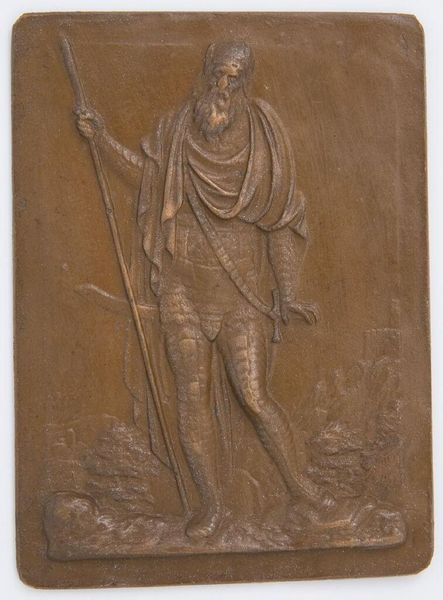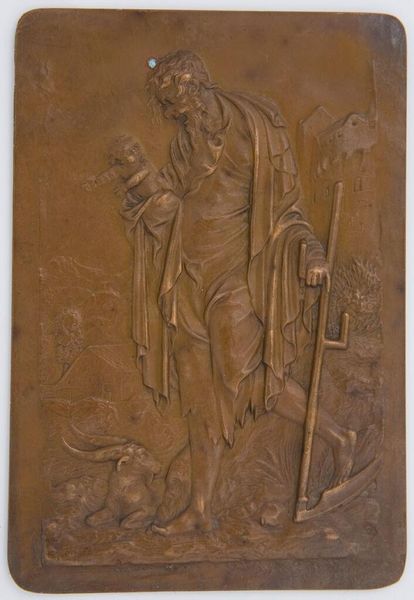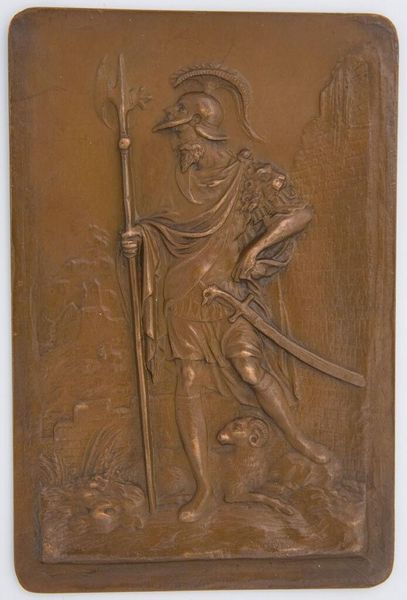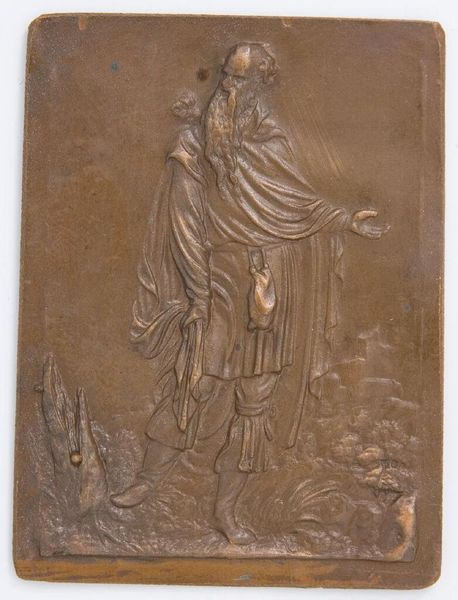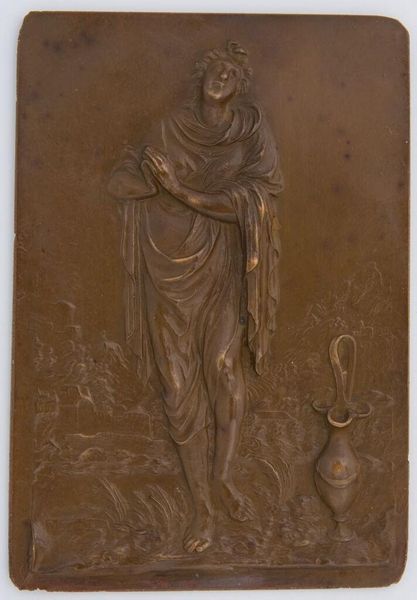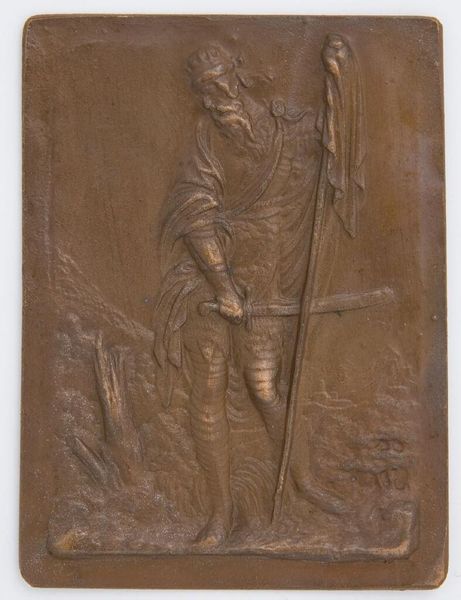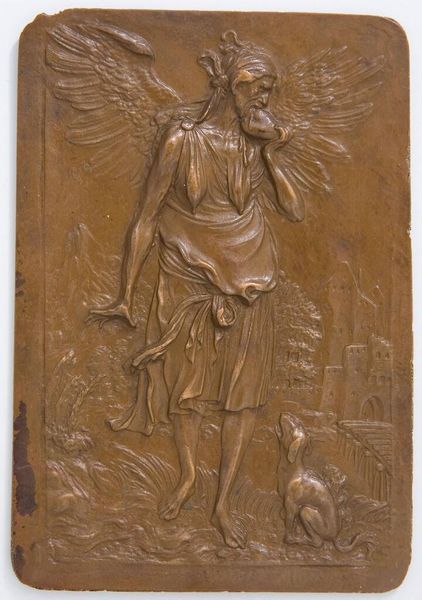
Mercury, from the series "The Seven Planetary Gods" early 20th century (original from c.1540)
0:00
0:00
Dimensions: 8.5 x 6 cm (3 3/8 x 2 3/8 in.)
Copyright: CC0 1.0
Curator: This is "Mercury, from the series 'The Seven Planetary Gods'," an anonymous work located at the Harvard Art Museums. It’s a bronze relief, quite small, only about 8.5 by 6 centimeters. Editor: It has an ethereal quality, almost dreamlike. The figure of Mercury seems to emerge from the background. Curator: The choice of bronze is interesting. Consider its historical significance – often linked to status and power. Its use here elevates Mercury beyond a mere figure, imbuing him with authority. Editor: Absolutely. The depiction of Mercury, messenger of the gods, must be understood within its socio-political context. How does the artist use this powerful figure to reflect broader narratives of power, gender, and class? Curator: The material itself, how it’s cast, too, speaks to production, to labor. These small bronzes would have been replicated, consumed, perhaps as status symbols. Editor: Thinking about who owned such a piece shapes our understanding of its function and meaning. Curator: Yes, it's fascinating to see how material choices and production intersect with the subject matter itself. Editor: It certainly gives us much to consider.
Comments
No comments
Be the first to comment and join the conversation on the ultimate creative platform.
